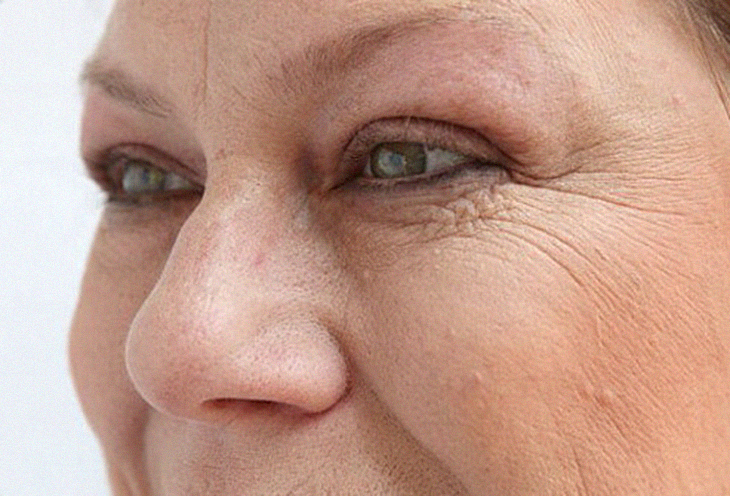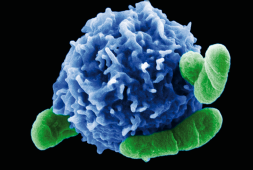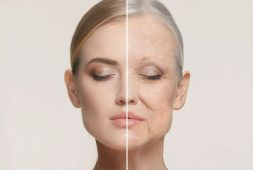
A recent study was published in the PLOS One journal, talking about how it identified bacterial pathways that are linked with skin aging. The data found that the main bacterial pathways that are associated to aging involve the skin pigment production, ceramides, and fatty acids.
Researchers say that further research is still needed to have a better understanding of the molecular processes that cause skin to age, as well as to truly figure out what the relationship is with the microbiome as well. But information and research taken from these proposed studies will definitely aid in developing better and more effective treatments to combat skin aging in the first place.
The skin is the biggest organ of the body, and its purpose is to act as a protective barrier from the outside environment. Moreover, most people also know that there is fungi, bacteria and viruses that live on peoples’ skin, as well as in the gut.
When it comes to the commensal microbial communities on the skin, otherwise known as the skin microbiome, these do not cause any disease but in fact, benefit the body. They could even be fixed on the skin, or survive on the skin temporarily.
The skin microbiome also communicates and interacts with the body’s immune system, which means that it’s functioning could be affected as a result. Meanwhile, the immune system also works to regulate the makeup of a persons’ skin microbiome.
In addition, aging creates changes to the skin’s function and structure. These changes could be caused from certain “intrinsic” factors like metabolic, hormonal, or immune system changes. On the other hand, “extrinsic” factors, like exposure to sunlight or particular temperatures, as well as smoking, could also cause the immune processes that influence the skin’s structure and its rejuvenation process.
Skin changes that happen during aging are decreased elasticity, increased wrinkles, reduced wound healing, and even impaired barrier function.
Also, other changes in the skin microbiome can result from a decline in sebum production, which is the oily substance whose function is to protect the skin. Another reason for an alteration to the skin microbiome is from a reduced water content in the skin, as well as immune dysfunction.
Other Age-Related Changes to Microbiome
These days, there are advanced scientific methods such as metagenomic sequencing techniques and 16S ribosomal RNA gene testing that help in assessing the changes to one’s skin microbiome due to aging.
As for associate professor of dermatology and microbiology at the University of Pennsylvania, Dr. Elizabeth Grice, she shared in a 2019 lecture ‘that the 16S ribosomal RNA sequencing technique allows us to “answer the questions [about] the composition of a sample or the diversity of a sample”.’
She also explained that, “Shotgun metagenomics provides a more nuanced view of the skin microbiome. Using these methods, one can take a sample containing the genomic DNA, […] break up that DNA in the sample, and then sequence those fragments. This allows one to identify microbes to the species and strain level, it allows one to reconstruct the genetic and functional metabolic pathways within a sample and, importantly, it gives you a multi-kingdom view of the skin microbiome.”
Former studies have shown that the skin microbiomes of basically all humans also consistently contain the following species of Staphylococcus, Cutibacterium, Corynebacterium, and Acinetobacter bacteria.
Yet, age, gender, body area, and geographic locations may also affect the composition of one’s skin microbiome. Despite the former studies identifying the changes in the makeup of the skin microbiome that are associated with aging, scientists didn’t fully understand the methods that caused these changes.
A new study from the team of NIZO Food Research from the Netherlands had a goal ‘to understand the connection between the body’s cellular processes, called co-metabolism, and genes, or bacterial functionalities, involved in skin aging.’ One illustrious makeup company that also sells skincare products, Estée Lauder, even partially funded the study.
What the research team did first was look through existing scientific literature to determine the common biologic pathways found between humans and skin microbes that are associated to intrinsic skin aging. After, they used the 16S ribosomal RNA sequencing testing from cheek samples taken from female participants, all with varied age-related skin changes, to reinforce the different changes to the skin microbiome composition that was observed in other selected studies.
The research team also took skin swab samples from each cheek, from 25 female participants in Belgium of European descent that were considered healthy. There were two age groups for the participants, the first aged 20 to 28, while the second was aged 59 to 68.
The study did not include participants that were found to have particular skin conditions or that were exposed to other external factors that are related to skin aging. Such criteria that was considered for exclusion was eczema, psoriasis, acne, the use of skin medications including steroids, antibiotics and antifungals within a month of the study. Others were smoking, or a history of smoking within the last two years, sunbathing or tanning, or drinking over 3 servings of alcohol daily.
Looking At Skin Aging Bacterial Pathways
The scientists also collected reference genomes from the gene sequences database of the National Center for Biotechnology Information. The gathered information looked at which concerned genes were relevant to skin aging, as well as identifying and confirming them by testing.
The team took used microbial pathways to make graphical models. These were used to analyze the 16S ribosomal RNA sequencing testing, the referenced skin organism genomes, and the data taken from the direct analysis of genomes found from the skin samples collected.
What the group discovered was that ‘bacterial pathways linked to skin aging were related to the production of ceramides, which are lipids that compose the natural skin barrier, as well as fatty acids and pigmentation.’ The researchers also figured out that the bacterial enzymes that are involved in protein glycation are also linked with skin aging.
Meanwhile, protein glycation in the skin also happens when sugars link to protein, like elastin and collagen. With a gathering of glycation of collagen and elastin end products, it can cause a loss of skin elasticity as well as cause sagging.
Medical News Today spoke with board-certified dermatologist at Providence Saint John’s Health Center, Dr. Dina F. Bierman, who was not involved with the study.
She shared, “[The study] went one step beyond what we already knew . […] They separated the population based [on] how their skin had aged. […] Making that distinction is very important, in terms of understanding how the bacteria and their presence are influencing the skin and the metabolic processes that influence aging.”
However, one limitation of the study was that it only had a small sample size and lacked diversity, which could limit the generalizability of the study’s findings in the first place.
But, these results could still serve as a basis for future studies that hope to improve one’s understanding of the ‘interplay of molecular processes and the microbiome in skin aging.’
Although Dr. Bierman applauded the study as a ‘good starting point,’ she also shared that “A lot of research [is needed] before we can actually, for sure, say what the different bacteria are doing and how they interact with each [other], too, and might influence how our skin ages.”



